Episode 112 Show Notes
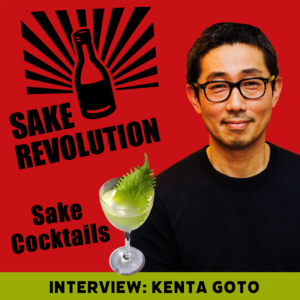 Episode 112. When it comes to sake controversies, there is one topic that can give “hot sake vs cold sake” a run for its money – and that is “sake cocktails!” Love them or hate them, cocktails made with sake are an up and coming way for new consumers to get their first exposure to sake. Since this is a somewhat controversial topic, we found the perfect subject matter expert to walk us through the the ins and outs of sake cocktails – Mr. Kenta Goto! He is an award-winning bartender with two eponymous cocktail bars: Bar Goto in Manhattan and Bar Goto Niban in Brooklyn. Kenta gives us his take on the role of sake in cocktails and teaches us how to marry sake wth other cocktail ingredients to create a balanced drink. And even better, he guides us on how to mix our own sake cocktail live on the podcast! This experience leaves John and Timothy shaken AND stirred as they reevaluate everything they thought they knew about sake in cocktails. If you feel somewhat muddled yourself when it comes to sake cocktails, this week’s episode will help you find the sake cocktail that’s just right for you. #sakerevolution
Episode 112. When it comes to sake controversies, there is one topic that can give “hot sake vs cold sake” a run for its money – and that is “sake cocktails!” Love them or hate them, cocktails made with sake are an up and coming way for new consumers to get their first exposure to sake. Since this is a somewhat controversial topic, we found the perfect subject matter expert to walk us through the the ins and outs of sake cocktails – Mr. Kenta Goto! He is an award-winning bartender with two eponymous cocktail bars: Bar Goto in Manhattan and Bar Goto Niban in Brooklyn. Kenta gives us his take on the role of sake in cocktails and teaches us how to marry sake wth other cocktail ingredients to create a balanced drink. And even better, he guides us on how to mix our own sake cocktail live on the podcast! This experience leaves John and Timothy shaken AND stirred as they reevaluate everything they thought they knew about sake in cocktails. If you feel somewhat muddled yourself when it comes to sake cocktails, this week’s episode will help you find the sake cocktail that’s just right for you. #sakerevolution
Skip to: 00:19 Show Opening
Welcome to the show from John and Timothy
Skip to: 01:25 Interview: Kenta Goto, Owner Bar Goto

Bar Goto
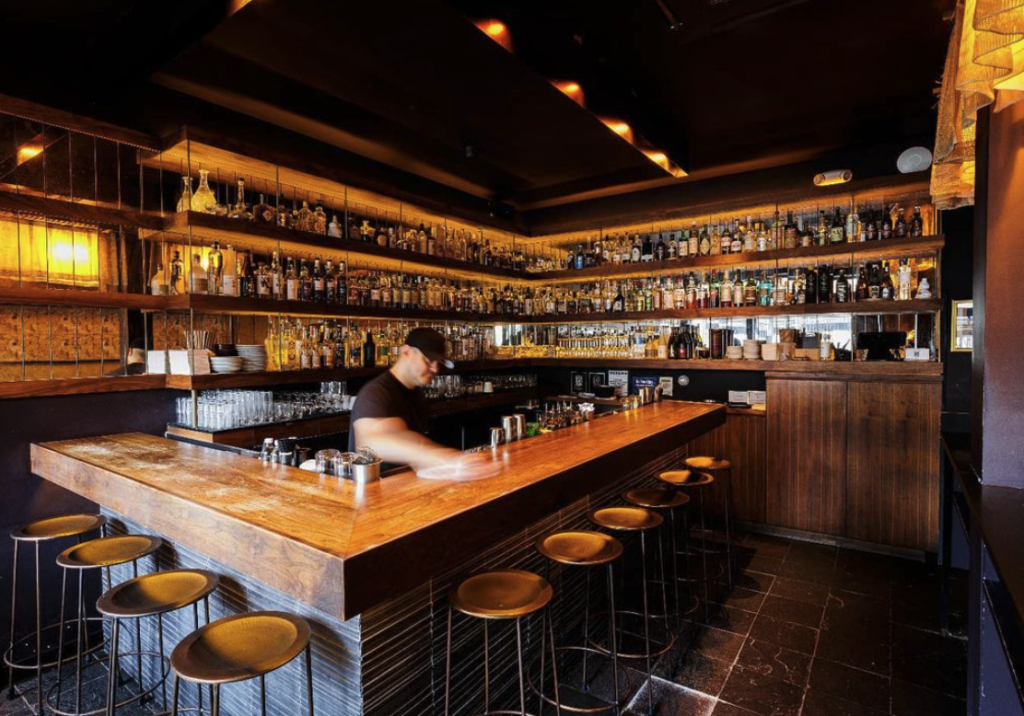
245 Eldridge St,
New York, NY 10002
CLOSED Monday
5pm – 12am Tuesday
5pm – 12am Wednesday
5pm – 1am Thursday
5pm – 2am Friday
5pm – 2am Saturday
5pm – 12am Sunday
WALK-IN ONLY — NO RESERVATIONS
Due to our limited space complete parties are seated first come, first served.
Indoor & outdoor seating available.
Web: https://www.bargoto.com/location/bar-goto/
Facebook: https://www.facebook.com/bargotonyc/
Instagram: https://www.instagram.com/bargoto_nyc/
Bar Goto Niban
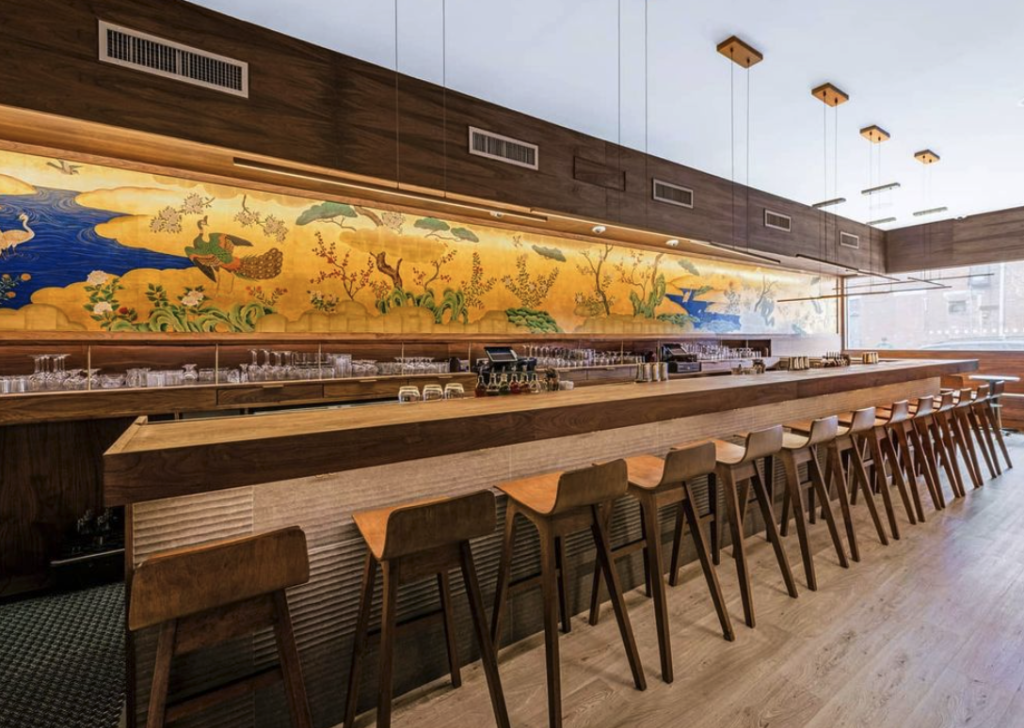
474 Bergen St.,
Brooklyn, NY 11217
CLOSED Monday
5pm – 12am Tuesday
5pm – 12am Wednesday
5pm – 12am Thursday
5pm – 1am Friday
5pm – 1am Saturday
5pm – 10pm Sunday
We are currently accepting limited table reservations for larger parties of 6-8 guests. If your party is fewer than 6 – no reservation needed!
We keep the majority of our space for walk-ins (including all seats at the bar). Complete parties are seated first come, first served. Indoor & outdoor seating available.
Web: https://www.bargoto.com/location/bar-goto-niban/
Facebook: https://www.facebook.com/bargotoniban/
Instagram: https://www.instagram.com/bargoto_niban/
Skip to: 13:30 sake Cocktail Recipe: The Far East Side
The Far East Side Cocktail
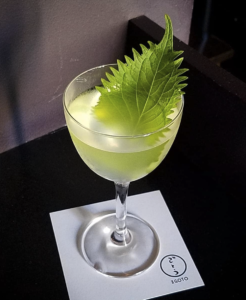
2 oz. Lightly Sweet Sake
3.5 tsp. Elderflower Liqueur
2.5 tsp. Blanco Tequila
1 tsp. fresh lemon Juice
4-5 Shiso leaves plus one for garnish
Directions:
1) Mix all liquid ingredients together along with Shiso leaves in a mixing tin.
2) Muddle leaves and liquid together.
3) Strain liquid into a second mixing glass to remove shiso leaves.
4) Add ice and stir approximately 30 times.
5) Strain into a chilled coupe glass and garnish with a shiso leaf.
Skip to: 15:49 Sake Introduction and Tasting : Harushika Junmai Ginjo
Harushika Junmai Ginjo
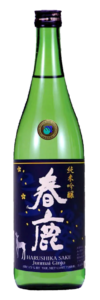
SMV: -3.0
Acidity: 1.5
Seimaibuai: 60%
Rice Type: Gohyakumangoku, Yamadanishiki
Classification: Junmai Ginjo
Prefecture: Nara
Alcohol: 15.5%
Brewery: Imanishi Seibee Shoten
Brand: Harushika (春鹿)
Sake Name English: Spring Deer
Yeast: Proprietary
NOTE: Use Discount Code “REVOLUTION” for 10% off your first order with Tippsy Sake.
Skip to: 28:23 Show Closing
This is it! Join us next time for another episode of Sake Revolution!
Announcing Patreon
 Now there is a new way to support Sake Revolution. Join us on Patreon! Patreon is an online platform that allows you to support your favorite creators by subscribing to a monthly membership. At Sake Revolution, we’re offering two tiers, each with its own perk. If you enjoy our sake podcast, if you are able, please consider supporting this labor of sake love! See below to learn about our Patreon support levels.
Now there is a new way to support Sake Revolution. Join us on Patreon! Patreon is an online platform that allows you to support your favorite creators by subscribing to a monthly membership. At Sake Revolution, we’re offering two tiers, each with its own perk. If you enjoy our sake podcast, if you are able, please consider supporting this labor of sake love! See below to learn about our Patreon support levels.
-
Sake Enthusiast
Have you ever wanted to sip along with us as we taste our sakes on the podcast? Now you can! As a Sake Enthusiast patron, you’ll get the inside track and know in advance which sakes we’ll be featuring on the show. This allows you to get them on hand and sip along with us while you listen.
-
Sake Otaku
As a Sake Otaku supporter of the pod, you’ll get access to all the Sake Enthusiast intel along with access to a monthly live zoom Sake Happy Hour taking place the first Weds of every month at 9pm ET (6pm PT). Visit with us live on zoom! Come with all your questions and suggestions and enjoy a relaxed and fun Happy Hour with with us as we all sip sake together!
Episode 112 Transcript
John Puma: 0:22
Hello everybody. And welcome to Sake Revolution. This is America’s first sake podcast and I am one of your Intrepid hosts. My name is John Puma from the Sake Notes. Also the administrator over the Internet Sake Discord come down and, uh, drink some sake with us sometime.
Timothy Sullivan: 0:42
And I am your host, Timothy Sullivan. I am a Sake Samurai. I’m a sake educator, as well as the founder of the Urban Sake website. And every week, John and I will be here tasting and chatting about all things sake and doing our best to make it fun and easy to understand.
John Puma: 0:59
Yeah. so what is in store for us that’s fun and easy to understand this week,
Timothy Sullivan: 1:02
well, it may be fun. I don’t know about easy this week, but today we are, we’re tackling a topic that I have heard can divide the sake community. So we have brought in an expert to help us navigate these waters.
John Puma: 1:19
I feel like there are plenty of topics that can divide the sake industry. You’re gonna need to be more specific
Timothy Sullivan: 1:25
Well today, we’re talking about sake cocktails and we’ve invited award-winning and well-known mixologist Kenta Goto to join us today. Kenta was born and raised in Japan and came to New York at age 21 to actually pursue fashion design, but he took on some bartending gigs for part-time work. Soon, he found himself at a seven year stint as a mixologist at the world, famous Pegu bar. And while he was there, he actually joined the management team and won bartender of the year in 2011. Now by 2015, Goto-san had struck out on his own and opened his own place called Bar Goto on Manhattan’s Lower East Side. Bar Goto was named best new bar by time out in New York and Bon Appetite and also was a James Beard award semifinalist. In January, 2020, Kenta opened a second branch of his cocktail empire called Bar Goto Niban can’t wait to hear all about those places and sake cocktails from Kenta. Kenta Goto, welcome to the show. Thanks for joining us.
Kenta Goto: 2:31
Hey Guys, thanks for having me.
John Puma: 2:33
I’m really glad that you can be here because, uh, you know, I think it’s important to have a subject matter expert. And I don’t think that Tim or I have sufficient sake cocktail mixing experience to, to really drive this one home and give it the attention it deserves. We do
Timothy Sullivan: 2:47
Yeah, we do not for sure.
John Puma: 2:50
push. I asked for
Timothy Sullivan: 2:50
And I get asked about sake cocktails all the time, so I’m super glad that Goto-san could join us.
John Puma: 2:55
right, right. I think like before we get into the actual mixing of stuff, uh, we have a couple of questions that we wanted to ask. Uh, number one is, you know, how’d, you get into bartending and, and, and cocktail making. This is a, specialized field. I find a lot of people, interesting ways to get into, we’ll say,
Kenta Goto: 3:17
So, um, yeah. Timothy just briefly mentioned that. yes, I did come to New York to, pursue fashion, but, um, long story short, after the school I just couldn’t get the, uh, job in fashion industry that have to, uh, survive in New York. So that’s, that was the beginning. But it’s a job where you meet so many people and you get the instant reaction when customer appreciate you. So more. I did it more. I got into it which was about 20 years ago then, um, although around that time, There were not many bartenders who were career oriented, but I was definitely fortunate enough to meet some bartenders who were making it then, um, those people opened my eyes for making cocktails properly. And that was the beginning.
Timothy Sullivan: 4:23
Wow. That’s really interesting. Can you tell us about your bars, Bar Goto and Bar Goto Niban, little bit about what type of, uh, services you offer and what they’re like.
Kenta Goto: 4:35
Right. I’d say, um, my bars, sort of, kind of reflection of me as somebody who was born raised in Japan and has been living in New York for long time. it’s a, it’s a basic American bars with Japanese twist and we introduce Japanese flavors, the ingredients through cocktails. And, but we also have, uh, sake, shochu and comfort Japanese bar food
Timothy Sullivan: 5:07
that’s awesome.
John Puma: 5:10
So, what are your inspirations when you’re designing your cocktails? I mean, you did mention that you like to use, uh, Japanese ingredients and bring some Japanese flavors, but, how I’m sure it goes further than that. So, uh, what, what is your philosophy about that? Uh,
Kenta Goto: 5:23
For me to create cocktails, I just get the hand to ideas from just pretty much, many things. But my inspiration, mainly comes from just desire to upgrade like Asian themed cocktails. So when I first started it, people talk about like Asian cocktails, not exactly Japanese, same just like Asian cocktails. And usually either like saketini or like a lychee Martini then, um, I just didn’t see no one really like, do anything about it Then as a, somebody, I mean, Asian working behind the bar, then a customer, just look at me and ask you, Hey, can you make me saketini? And then just, I just, you know, felt like it’s my responsibility to, I mean, that didn’t have to be my responsibility, but, uh, I wanted to do something about it and that’s how I started utilizing more like a focusing on Japanese ingredients into cocktails. And then that became a basically concept of Bar Goto and Bar Goto Niban.
Timothy Sullivan: 6:42
That leads me to a really interesting question. You know, you are from Japan, but you came here at a very young age, so you’ve lived a long time in New York. So I’m sure a big part of you has New York inspiration. And you have a lot of, your Japanese side coming through as well. How do U.S. Cocktails and Japanese cocktails differ? What’s some of the differences that you’ve seen over your work at Bar Goto?
Kenta Goto: 7:08
Yes. So, um, um, I mean, right now, I actually do not see that much difference between how.
John Puma: 7:16
How do.
Kenta Goto: 7:17
American bartenders make cocktails and how the Japanese bartenders make cocktails. Um, right now the gap between two, is closing in my opinion, but when I first started bartending, um, maybe up until like, let’s say 10 years ago, there was a clear difference. The difference is how to use your creativity in cocktails. I see Japanese bartenders using creativity to master the classics
Timothy Sullivan: 7:54
Mmm.
Kenta Goto: 7:54
while US bartenders are using creativity to like modernize, like creating new something. New cocktails and kind of like, um, stay inside with the box versus go outside the box kind kind of difference. As of now, and then last ten, five years, I see more American bartenders just slow down and, uh, revisit the basics and pay attention to the process and master the classics. And I see more Japanese bartenders, go outside of the box and create a new version of a gimlet. Modernized version of a, um, classic cocktails.
Timothy Sullivan: 8:44
That’s awesome.
John Puma: 8:45
I guess the contentious part of our, our conversation here is sake as a cocktail ingredient. So tell us about using sake as a cocktail ingredient.
Kenta Goto: 8:56
When I doing sake, I usually just doing sake
Timothy Sullivan: 8:59
Yeah,
John Puma: 9:00
mm-hmm
Kenta Goto: 9:01
Sake cocktail wasn’t exactly my choice, but, um, but that, but here is me I’m I wanted to like upgrade asian-themed cocktails and that was my drive to work on my career I know that definitely there are sake fans out there who feel wrong about using sake in cocktails, um, I have been creating and serving sake based cocktails about 15 years at this point, then now what I can say to everybody is that, uh, if the product is good, people appreciate it and that can be made with sake or something else. But the point is there are, I guess, a lot of people haven’t met like experienced cocktails made with sake in a great way. So possibly a lot of people have a bad experience, uh, drinking sake or sake in cocktails, uh, sake bomb might be like a not perfect example, but,
Timothy Sullivan: 10:12
Yes. Yeah. I guess, I guess when you boil it down, like a sake bomb is a rudimentary cocktail, isn’t it? Yeah. So customers were asking you for sake cocktails, when you first started, was it something people requested?
Kenta Goto: 10:28
And the very first cocktail that was approved, my former boss, Audrey Sanders at Pegu Club and so very first cocktail that went on Pegu Club menu. Uh, that was, um, sake, sake based martini, but not like a just typical saketini where people just put whatever the sake that they have and whatever that they have just shake, shake it crazy. But, uh, slice of cucumber um, it wasn’t like it was a little more thoughtful sake based martini. And then that was, uh, my very first creation.
Timothy Sullivan: 11:10
Can you tell us what went into that cocktail? Oh, oh
Kenta Goto: 11:13
yes. So this one, It’s mainly sake
John Puma: 11:17
Mm.
Kenta Goto: 11:17
and a bit of gin and just a hint of maraschino cherry liquor. And this cocktail is now called Sakura Martini at Bar Goto. Yeah. When I was at Pegu Club my intention was to garnish the martini with cherry blossom, but, uh, I just couldn’t find it at that time. And that was, I mean, easy 15 years ago, but by the time that, uh, I opened Bar Goto and cherry blossom, uh, salted cherry blossom is now widely available. So, um, I was able to, easily get it and. Started using as a garnish for the martini. And now we were able to officially call the martini Sakura Martini
Timothy Sullivan: 12:10
Wow. Well, it sounds, sounds delicious.
John Puma: 12:13
Yeah,
Timothy Sullivan: 12:14
now I have one more question for you. One thing we hear a lot from sake people is that you can use a sake cocktail as kind of a bridge to reach customers. Give them a sake cocktail first, and then maybe they’ll be interested in trying premium sake on its own. What do you think about that? Do you think that’s a viable way to introduce people to sake?
Kenta Goto: 12:37
I I say yes, using cocktail as a vessel to introduce something new is a, is a good way. And then, um, Many people tend to order from something that they are already comfortable with. And some people might be a intimidated by the sake menu. They might not know where to start but there’s a cocktail that’s already familiar to the customer. You know, we use that as a starting point. And create something new. so that can be a great first introduction. So, uh, yeah, I guess my answer is, so cocktail is a great way to, uh, introduce sake to sake beginners.
John Puma: 13:30
Wow. Sounds good. Um, so, uh, today we are going to be making live on the show. We’re gonna, we’re gonna mixing drinks guys. is gonna be interesting. we’re gonna be making the far east side cocktail. Uh, so what can you tell us about this one?
Kenta Goto: 13:47
So this far east side is, it’s based on this classic American cocktail called south side. And what the south side is, it’s a basically mojito made with gin. South side cocktail was a one with a very popular cocktail at, uh, 21 club in New York, in Midtown New York. But anyway, so, um, so the base is mojito So this cocktail is one of the most popular cocktails at Bar Goto. but here’s a little trick to make sake based mojito, but taste great.
Timothy Sullivan: 14:32
All right. So let me, let me read off the ingredients for the far east side cocktail. And then John, you can introduce the sake that will be, uh, mixing in this cocktail. So the far east side cocktail, two ounces of sake, 3.5 teaspoons of elder flower liqueur, 2.5 teaspoons of a Blanco tequila, one teaspoon of fresh lemon juice and four to five shiso leaves. I think if this is based on a mojito, instead of mint, we’re gonna be using the shiso here, is that right?
Kenta Goto: 15:08
Shiso. Yes. typically mojito, yeah, made with rum and about rum part is replaced with sake and tequila, uh, lime juice. The sour part is now, uh, lemon juice in this case.
Timothy Sullivan: 15:25
right? Hmm. Lemon juice. All right.
Kenta Goto: 15:27
like a simple syrup or sugar, the sweet part, uh, is replaced with elder flower liqueur
Timothy Sullivan: 15:34
All right.
Kenta Goto: 15:35
yes, As you pointed out, mint is replaced with shiso.
Timothy Sullivan: 15:39
Cool. Okay, John. So why don’t you introduce us to the sake we’re going to be mixing in and we’re gonna taste it first and then we’ll put it together in the cocktail.
John Puma: 15:49
Right. So, um, today we’re gonna be drinking the Harushika Junmai ginjo. Uh, this is from Imanishi Seibee Shoten in Nara Prefecture. this is of course, uh Junmai Ginjo uh, it is. 15% alcohol, the rice, which is not listed is milled down to 60% of its original size and on the sake meter value it’s coming in a minus three. So a touch on the sweet side, and the acidity is 1.5.
Timothy Sullivan: 16:22
All right. Well, before we get to the cocktail mixing, let’s just try to sake on its own and give it a quick, quick taste. So we’ll get in the glass. All right. So it has a lovely, soft ginjo aroma, gentle fruits. Really nice. And let’s give it a taste. Ooh, it’s got a little bit of sweetness there and a rich, smooth, clean this. I think this will be a good sake to use in this cocktail.
John Puma: 16:54
It’s a good sake to have on its own too.
Timothy Sullivan: 16:55
Yeah. Yeah. So this cocktail does have some, uh, sweetness to it from the elder flower liqueur. So I think a sake that is just, just a touch on the sweet side is gonna be okay. What do you think Kenta? Okay.
Kenta Goto: 17:10
Yeah, exactly. So this, uh, whole drink is, like a fruity refreshing, kind of spring-ish cocktails. So, uh, you wanna sake that gives you the same type of impression. Yeah.
John Puma: 17:25
All right,
Kenta Goto: 17:26
gonna put
Timothy Sullivan: 17:27
So we’ve got all our ingredients here. Can you walk us through building the cocktail? the first step
Kenta Goto: 17:33
The first is that John, You’re going to put shiso leaves in a mixing tin. Uh, you are gonna add all liquid one by one. Yeah.
Timothy Sullivan: 17:49
Okay, so I’ve got lemon juice. I’m gonna put that in. And I’ve got elder flower liqueur. We’re gonna put that in. It’s very aromatic. Isn’t it? The elder flower liqueur. and.
Kenta Goto: 18:04
Uh, once the shiso and the French liqueur the elder flower in this case mixed together, uh, you will, you will enjoy that new flavor.
Timothy Sullivan: 18:19
And then we are gonna put in the sake and the tequila
John Puma: 18:22
mm-hmm
Timothy Sullivan: 18:23
Okay.
John Puma: 18:24
I’ve got it all in here now.
Kenta Goto: 18:27
You got the other lemon juice, elder flower tequila and the sake. Okay.
Timothy Sullivan: 18:32
yep.
Kenta Goto: 18:34
So you gonna, uh, muddle it?
John Puma: 18:36
All right.
Timothy Sullivan: 18:38
Okay. So we’re using our muddler and we are mashing the shiso leaves and all liquid
John Puma: 18:46
my muddler does not get a lot of use in the house. I have to say.
Timothy Sullivan: 18:53
Okay. I think I muddled. Oh,
John Puma: 18:56
You’re muddled?
Kenta Goto: 18:56
Yeah, and I, you smell it you, uh, do you get the shiso aroma? Okay. Then I think you guys muddled well. So next thing, what you wanna do is, uh, you gonna transfer that content into a different glass yeah. Perfect. Then you wanna strain the shiso out. you, yeah. When you transfer the liquid into the next glass.
Timothy Sullivan: 19:26
Okay.
Kenta Goto: 19:29
Yeah. You want only the liquid,
Timothy Sullivan: 19:32
Yep. Okay. Got it.
Kenta Goto: 19:35
then you are gonna add ice. All right. Then, um,
Timothy Sullivan: 19:41
Okay. Ice going in. Are we gonna shake or stir?
Kenta Goto: 19:45
uh, we gonna stir it. yes.
Timothy Sullivan: 19:48
All right.
Kenta Goto: 19:49
I, I will tell you, I will tell you why we, we are not shaking a little later.
Timothy Sullivan: 19:55
Okay. I’m stirring. I’m stir. Okay.
Kenta Goto: 19:58
I mean, you can use chopsticks, just whatever, whatever that is. stir for like 30 times
Timothy Sullivan: 20:12
Okay.
Kenta Goto: 20:13
for like 30 times once do that then. Yeah. Then that’s it. I mean, sake. I mean, as everybody knows, it’s, uh, it’s not like a whiskey, it’s not 80 proof. It’s very gentle. So we don’t wanna over dilute it
Timothy Sullivan: 20:23
I see. Now I have my, uh, the glass I have is a coupe glass. Is that good for serving?
Kenta Goto: 20:30
Yeah. Sounds.
Timothy Sullivan: 20:31
And should we garnish with a shiso leaf?
Kenta Goto: 20:34
yeah, that’s how we do it at, uh, Bar Goto, but
Timothy Sullivan: 20:38
Okay. Well, I have some
Kenta Goto: 20:39
that’s a, that’s an option.
Timothy Sullivan: 20:41
Shiso leaves, so I’m gonna garnish with,
John Puma: 20:44
how all right. uh
Timothy Sullivan: 20:53
shiso. Okay. John I’m pouring. All right. I’ve got. This looks beautiful. I don’t think I’ve ever made a cocktail that looks this nice.
John Puma: 20:57
And garnish. all right.
Timothy Sullivan: 21:00
right.
Kenta Goto: 21:01
all
Timothy Sullivan: 21:02
Here it is.
Kenta Goto: 21:03
right. Cheers guys.
Timothy Sullivan: 21:05
Okay, I’m gonna try this. Hmm. That’s good
John Puma: 21:12
Here we go. Cheers. Yeah, this actually really does remind me of a, of a south side.
Timothy Sullivan: 21:19
Yeah. And the shiso she and the shiso, the shiso flavor is very subtle.
John Puma: 21:24
Mm-hmm
Timothy Sullivan: 21:24
But it’s it, it really brings out a bright, fresh grassy taste. It’s it’s lovely
Kenta Goto: 21:30
So yeah, so the base is sake, but, um, There’s uh, key players in, in the cocktails that, uh, Shiso elder flower and tequila. Yeah. Although we put a just tiny portion of tequila, but, uh, um, we are using tequila as a sort of kind of backbone cocktails, bone since sake is so delicate and, uh, comes at the lower proof.
John Puma: 22:00
I have to say I was a little nervous about the presence of tequila. I’ve had some bad experiences, but
Kenta Goto: 22:07
Yeah. So
John Puma: 22:08
very subtle.
Kenta Goto: 22:10
Then, um, the reason that, we don’t see cocktails made with sake often enough is that I guess a lot of people, um, needs to just understand that, uh, um, most of recipe. That we use as a starting point, create cocktails, utilize like 80 proof or even higher. It’s basically the recipe for classic cocktails use higher spirits, not something like sake. So when you create cocktails with sake, you let’s say you are gonna make a sake gimlet. You, you don’t wanna just simply swap gin with the sake and stop right there. You just need to, uh, tweak the tweak recipe so that you have a right balance between a sake and other ingredients. Basically these are alcohol sour and sweet. Right now it’s a, when you make mojito, it’s basically rum sour and sweet,
John Puma: 23:17
mm-hmm
Kenta Goto: 23:18
and this is the kind of commonly used proportion two ounce, 80 proof spirits and three quarter of lemon or lime sour.
John Puma: 23:32
mm-hmm I
Kenta Goto: 23:34
Three quarter to maybe one ounce of, uh, sweet.
Timothy Sullivan: 23:38
Sweet. Okay.
John Puma: 23:39
see.
Kenta Goto: 23:41
But when you make cocktail with sake, you’re gonna tweak it like this.
Timothy Sullivan: 23:45
Oh.
Kenta Goto: 23:46
So you’re gonna use two ounce of sake, to fully replace 80 proof rum, but since proof is so different that you’re gonna add just. In this case, 2.5 teaspoon of tequlia
Timothy Sullivan: 24:00
Hm.
Kenta Goto: 24:01
just, just tiny portion of a higher spirit as a backbone. So dailing up the quantity of alcohol and dailing down of sour and sweet.
Timothy Sullivan: 24:14
Well, so it’s all about maintaining that balance, starting with a lower proof base. You have to make adjustments in other areas. yeah,
Kenta Goto: 24:25
so paying attention to the proof of sake is, um, uh, most important thing then starting with a lower. then, uh, next thing is just finding that right type of
Timothy Sullivan: 24:38
Mm.
Kenta Goto: 24:39
sake to the flavor that you’re trying to accomplish.
Timothy Sullivan: 24:43
there, there are some sakes that are higher in alcohol. 18, 19%. Some are super fruity. Some are really umami driven.
Kenta Goto: 24:53
Yeah.
Timothy Sullivan: 24:54
Yeah.,
John Puma: 24:56
have you played around with using that style of sake? Those umami forward, sakes as a, as a cocktail mixer
Kenta Goto: 25:04
Yeah. aside from our sakura martini, uh, we have this martini made with Hakkaisan Kijoshu which we think it’s umami rich, almost a hint of sweetness to it compared to the Harushika sake that you just tasted. it’s much fuller richer and a touch sweeter. so we use the Hakkaisan Kijoshu with a Japanese rice vodka to make a slightly umami oriented sake martini.
Timothy Sullivan: 25:45
that’s great. Have you ever tried those unpasteurized muroka nama genshu sakes that are they’re super juicy and fruity. Lots of melon have ever used something like that in a cocktail.
Kenta Goto: 25:59
Yeah. Yeah. In addition to the proof of sake, you need to pay attention to just finding the right, uh, type of sake and right. Type of spirits. So let’s say to make martini sake, martini, and you wanna use. So, if you gonna make sake martini with the harushika sake that you just used today, maybe you, you need to pick a gin that is very soft. Not so Juniper, very oriented, but the same time you have some sake, that’s like Nama sake, um, yamahai or bolder then you might wanna pick a gin that is more like a classic, like, uh, traditional London, style gin, like very crisp juniper yeah. So, yeah, so that’s my, two cents.
John Puma: 26:58
Thank Nice. so where can our listeners, find out more about you and visit your bars and find you online, all that other, good stuff?
Kenta Goto: 27:07
So, uh, right now we have two locations, Bar Goto, is in Manhattan and also Brooklyn. one is lower east side, the one in Brooklyn is, uh, one block away from Barkley Center.
John Puma: 27:23
Very convenient location for anybody going to an event over there
Kenta Goto: 27:26
so if you go see, uh, Brooklyn Nets, you know where to stop before and after the game.
Timothy Sullivan: 27:34
And where can people, uh, find you online if they wanna read more about you,
Kenta Goto: 27:40
yeah. Anyone can just message to Bar Goto or Bar Goto Niban through Instagram
Timothy Sullivan: 27:46
Mm-hmm
Kenta Goto: 27:47
that’s gonna be transferred to my phone. So, yeah.
Timothy Sullivan: 27:51
awesome. We’ll be sure to put all your contact information and information on your bars in our show notes. So anyone who’s interested in tasting your cocktails here in New York city can visit you or check out your social media. Goto-san thank you so much for joining us today. This is a such a delicious cocktail. I hope all our listeners will try to make it at home. And you taught us a lot about using sake in cocktails. I have a whole new perspective. Thank you so much.
Kenta Goto: 28:21
Thank you so much for having me.
Timothy Sullivan: 28:23
Awesome. In addition to Goto-san, I wanna also thank our patrons for supporting us each and every week and helping us bringing you Sake Revolution. If you would like to become a patron, please visit us at patreon.com/SakeRevolution.
John Puma: 28:40
And another great way to support us is by leaving us a review on Apple podcast or your podcast platform of choice. It really, really, really does help get the word out about our show. so until next time,
Kenta Goto: 28:57
Yeah.
Timothy Sullivan: 29:02
Kanpai!. This is really good.
John Puma: 29:06
good. This is
Timothy Sullivan: 29:07
like this cocktail!.
Kenta Goto: 29:08
Oh, right.